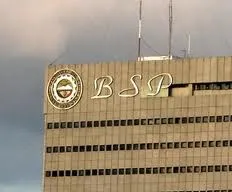
Philippine banking sector dominated by 5 banks
5 banks account for 47.5% share.
This is the scenario in Philippine domestic banking during the first semester.
According to the Bangko Sentral ng Pilipinas at this rate of market dominance, it is still manageable enough to merit a “moderate supervisory concern.”
“As of end-June 2012, financial conglomerates represented a moderate supervisory concern as five banks that belong to conglomerated family groups in the Top 10 had a combined market share of 47.5 percent,” noted the BSP in its Report on the Philippine Financial System for the First Semester.
The BSP said it has “sought to improve the existing information sharing arrangements among the member agencies of the FSF (Financial Sector Forum) for the efficient conduct of coordinated regulation and supervision of financial conglomerates.”
Based on its latest review, the central bank is confident that the domestic financial system continued to grow on the back of sound macroeconomic fundamentals and sustained implementation of deep-ranging reforms, citing the 6.1 percent GDP expansion the first semester from 4.2 percent a year ago despite the global economic slowdown.
“Accordingly, assets, loans, deposit liabilities and capital accounts continued to grow; asset quality and solvency indicators improved further; banks system’s net profit posted double-digit growth; BSP-supervised financial institutions recorded commendable performance during the first semester of 2012,” added the BSP.
Central bank data showed that banks’ key balance sheet and income indicators continue to be resilient.
Banks remained profitable as interest and non-interest based revenue streams recorded robust expansion. Net profit stood at P60.8 billion, 17.1 percent higher than last year’s P51.9 billion.
Total resources grew by 5.6 percent to P7.41 trillion from P7.018 trillion a year ago, which were channeled mostly to loans and portfolio investments.
Loan and asset quality have remarkably improved as NPL/NPA ratios of the banking system reached their record lows since the 1997 Asian financial crisis.
Liquid assets-to-deposit ratio remained strong at 54.7 percent from year ago’s 57.1 percent.
Furthermore, banks remained solvent during the semester in review as capital adequacy ratio was above regulatory and international standards at 17.6 percent on a consolidated basis and 16.7 percent on a solo basis. Net Tier 1 ratio likewise remained strong at 14.4 percent.
For more.




![Lorem Ipsum [ABF 1]](https://cmg-qa.s3.ap-southeast-1.amazonaws.com/s3fs-public/styles/exclusive_featured_article/public/2025-03/a_hand_pointing_to_a_futuristic_technology_5b87c9d0e3_1.png.webp?itok=2w0y1WhS)


![Cross Domain [Manu + SBR + ABF + ABR + FMCG + HBR + ]](https://cmg-qa.s3.ap-southeast-1.amazonaws.com/s3fs-public/styles/exclusive_featured_article/public/2025-01/earth-3537401_1920_4.jpg.webp?itok=WaRpTJwE)







 Advertise
Advertise

